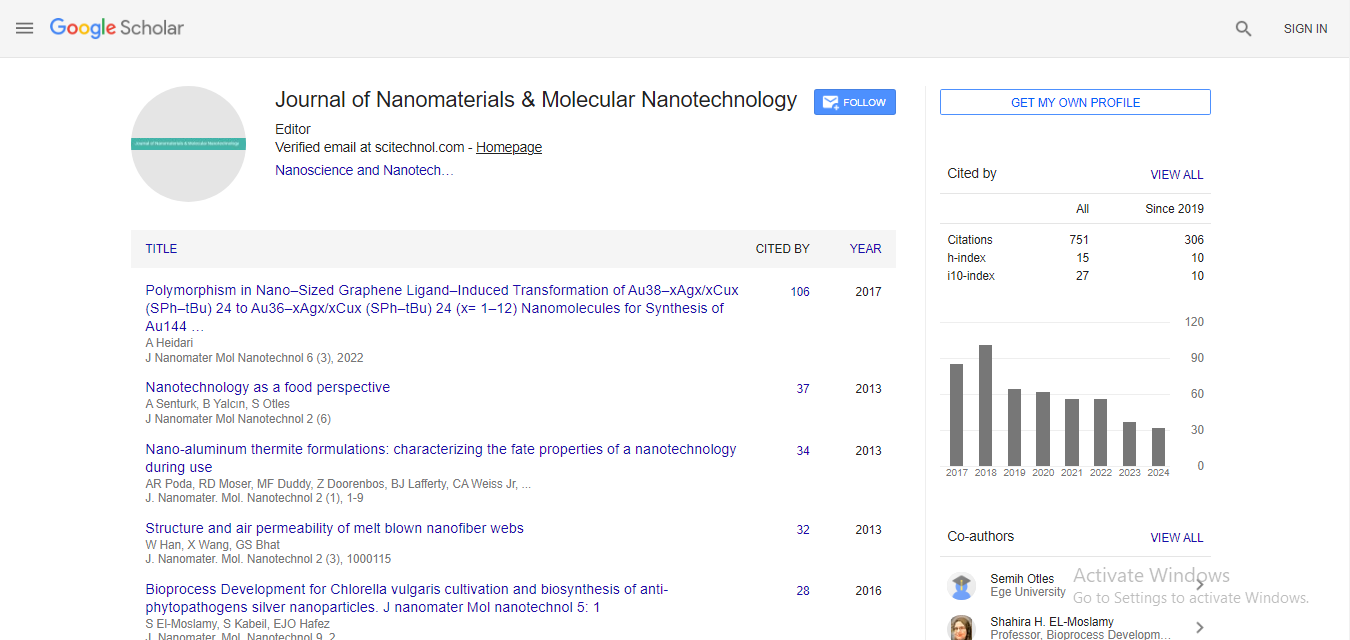Development and evaluation of the porous structure and its effect on the electrical conductivity of conductive polymer composites
Merzouki Abd-Elhafid and Haddaoui Nacer-Eddine
Ferhat Abbas University Setif, Algeria
: J Nanomater Mol Nanotechnol
Abstract
An attempt is made to develop a porous structure in a conductive polymer composite with a large surface area which will be used in contact with the surrounding fluid medium. We studied the influence of the incorporation of a blowing agent, azobisformamide, on the development of a porous structure in conductive polypropylene-based composites and its effect on the conductivity of the resulting porous materials. We present the evolution of the parameters related to the development of the porous structure; namely conductivity, density, the extent of porosity, azobisformamide efficiency, and material conductivity regression as a function of the blowing agent concentration for a fixed filler concentration of two types of conductive fillers, Carbon Black and Acetylene Black. The results showed that porosity is developed starting from a concentration of 0.8 phr of the blowing agent in the composites filled with 14.5 V % of Carbon Black or Acetylene Black. The matrix-filler interactions and those between the matrix and the blowing agent seem to affect the filler distribution rather than the alveoli formation. After a drastic decrease in the electrical conductivity, an increase of this property is observed above a concentration of 1 phr azobisformamide, and 60 % of the compact material’s conductivity can be recovered above 4 phr in an elaborated material having 30 % porosity. The loss of conductivity in the conductive composite materials is very noticeable at the percolation threshold, by breaking the conductive network developed by the conductive filler at this level.
Biography
E-mail: hafid_merzouki@univ-setif.dz
 Spanish
Spanish  Chinese
Chinese  Russian
Russian  German
German  French
French  Japanese
Japanese  Portuguese
Portuguese  Hindi
Hindi 



